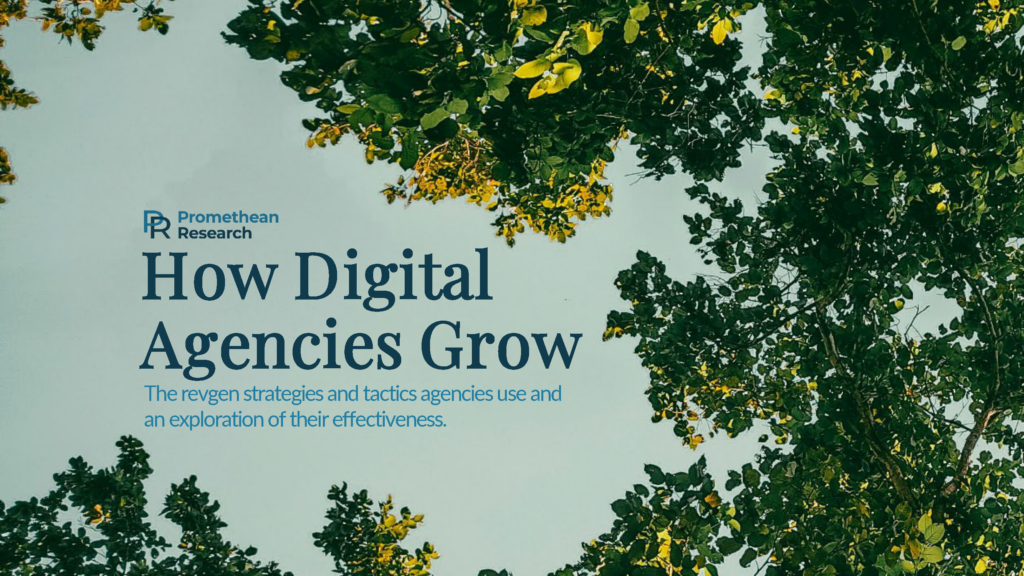There are a multitude of factors to consider when establishing or expanding your business. Who will you serve? How and when will you scale? What will your branding convey? What will success look like?
During this exciting journey, your pricing structure will inevitably come up. “How will we get paid?” is a question that informs nearly all growth strategies.
One popular pricing structure in the world of digital agencies is the retainer fee. It’s a tried-and-true method that many agencies rely on, offering stability and fostering ongoing relationships with clients. If you’re considering going down this path, it’s crucial to know how to calculate a retainer fee correctly. Getting it right can set your agency up for success and make your growth journey a whole lot smoother.
What is a Retainer Fee?
A retainer fee is an agreed-upon upfront cost for a service set before you provide the service. Essentially, it’s an advance payment to a professional or agency for future or continued service.
Retainers are an incredibly common pricing model for digital marketing agencies. Our latest industry surveys show that 9 out of 10 digital agencies use the retainer model.
We looked deeper into how retainers help digital agencies grow and found that the average retainer size was significantly smaller than the average project size, with the most common retainer being less than $5k per month. Almost half the retainers were under $10k per month.
no correlation existed between average retainer sizes and the number of retainer clients or agency size. However, there was a positive correlation between agency size and the average number of retainer clients:
- Large (>=50 FTE) agencies had an average of 48 retainer clients.
- Medium (25-49 FTE) agencies had an average of 28 retainer clients.
- Small (10-24 FTE) agencies had an average of 18 retainer clients.
- Studio (<10 FTE) agencies had an average of 21 retainer clients.
- The average agency had 21 retainer clients in 2023.
There were multiple Medium and Large agencies that reported a typical retainer size of <$25k and several Small and Studio agencies that had typical retainers of >$50k.
Finally, there was a correlation between the typical retainer size and the size of the agency’s typical client. Larger clients were sold larger retainers. This wasn’t relegated to large companies, though; in contrast to projects, it was common for agencies of any size to offer retainers of any size.
The full report contains a detailed analysis of how digital agencies grow and an evaluation of 34 revenue generation tactics to explore which are most effective.
How Do Digital Agencies Structure Their Retainers?
An agency retainer represents a contractual agreement, typically long-term and recurring, between a client and a marketing agency. The framework for such an agreement is either monthly or quarterly, although the specifics of this timeline may vary based on individual agreements.
Here’s an example of how a retainer agreement unfolds:
- Initial Agreement: The inception of a retainer involves an agreement on the project scope. This phase includes detailing the nature of the work, time allocation, expected deliverables, anticipated results, and the overall project timeframe. For instance, a client may seek the agency’s expertise in social media marketing for a quarter.
- Resource Distribution: Post agreement, the agency dedicates a predetermined set of resources to manage the client’s project. This allocation often includes human resources (i.e., the number of personnel assigned to the project) and time. For example, a specified number of hours per week may be allocated to manage the client’s social media presence.
- Continual Execution: Given that the project is not a one-off task, the agency engages with the client over a defined period regularly. This engagement may encompass tasks such as creating and posting content, monitoring and analyzing results, strategic adjustments based on data, and regular reporting to the client.
- Compensation Structure: In contrast to per-project billing, the agency charges the client a fixed fee at regular intervals (typically monthly or quarterly). This fee is mutually agreed upon in advance and is generally based on the scope of work and resources allocated to the project.
- Evaluation and Renewal: Upon reaching the end of the retainer period, the agency and client review the achieved results and consider renewing the retainer agreement. Should the client express satisfaction with the services rendered and the results achieved, the agreement may be renewed for a further period.
When is a Retainer Fee Helpful?
Agency owners must deploy varied revenue-generating and pricing approaches to ensure steady cash flow. Retainer contracts for specific services or in certain situations can help with your company’s growth and sustainability.
Some services or instances where retainer contracts make sense are:
- Ongoing Maintenance. This service category casts a wide net. Examples include Search Engine Optimization, social media management, website conversion optimization, digital ad campaign deployment and management, and website content creation and curation.
- Reduce Agency Risk. Since retainer fees are prepaid, agencies can mitigate risks of nonpayment for completed work and reduce collection headaches.
- Create Reliable Revenue. Your retainer-based clients provide a steady, consistent pipeline of work. It can serve as a baseline for projected monthly income. It also can help determine the need to add new clients or projects.
- Build Capital to Reinvest in Business. The guaranteed revenue allows you to make strategic growth decisions with cash on hand.
- Ongoing Value to Customer. Retainers help build long-term, trusting relationships with clients. As a critical partner in your client’s success, you and your team can fully invest in their strategic plan and goals to help establish best practices and contribute to innovative solutions.
Benefits of retainer arrangements for the agency
Retainer agreements offer myriad benefits for both the client and the agency. These benefits stem from the consistency and predictability that a retainer agreement provides, allowing both parties to plan better and work more efficiently.
- Consistent Revenue: One of the most significant advantages for shops is the increased assurance of consistent revenue. This makes it easier for leadership to plan for growth.
- Better Results: Retainer agreements enable agencies to deliver better results due to the long-term nature of the engagement. Through regular work with the same client, agencies gain a deeper understanding of the client’s business, enabling them to refine marketing strategies and deliverables over time.
- Enhanced Workflow: Retainer agreements facilitate better planning and delegation of work tasks. They allow for enhanced workflow management and less time directed toward attracting new business, enabling agencies to focus more on marketing their clients.
Benefits for clients
Clients also reap several benefits from retainer agreements:
- Clear Understanding of Work and Value: With a retainer agreement, clients are clear on the work the agency will do for them and the value it’ll bring. They can anticipate the scope and nature of the services they will receive, which allows for better planning and expectation management on their end.
- Deeper Familiarity with Clients: With the continuity of work, agencies develop a deeper familiarity with their retainer clients. This understanding enables them to refine their services and tailor their strategies to the business’s specific needs.
- Opportunities for Creative Marketing Strategies: The lack of time constraints in retainer agreements allows marketers to be more creative with their strategies. They can capitalize on the latest trends and insights in marketing, explore innovative approaches, and conduct thorough marketing experimentation methods, such as A/B testing and multivariate testing. Such strategies are especially beneficial for data-driven marketing agencies that look to turn the data they mine into growth for their clients.
Limitations of Retainer Fees
Though most digital agencies use retainer fees, there are some drawbacks to this pay structure.
Limitations of using retainer fees include:
- Simple or Complex Projects. You base retainers on projected time and the employee experience level needed to deliver on projects successfully. That means sometimes you may have to choose which projects to focus on. This choice could mean some goals may go unmet.
- Surpassing Budgeted Hours. Time tracking is still important even though your team is not billing by the hour. To make sure your retainer contract makes sense financially for your agency, you need to produce detailed reports of monthly time allocation.
- Lack of Clarity on Value Added. Occasionally scope creep or unclear expectations happen when clients enter into retainer contracts. They expect you to fulfill their every creative wish. Project managers need to pay close attention to client “asks” and timelines.
How to Calculate a Retainer Fee
If you decide that a retainer fee is right for your business, you’ll need to know how to calculate it. You want to be sure to calculate your retainer fee in such a way that your business doesn’t end up spending way more time than expected on a project and, therefore, get paid much less than deserved.
To calculate a retainer fee:
- Use Hourly Rates. Our benchmarking service includes hourly rate benchmarks for your service mix.
- Understand Cost. You should understand time commitments, salaries for associated staff, overhead costs, and desired profit margins to build hourly rates that flow into a retainer. This understanding will prevent you from overcommitting or underselling to stay profitable.
- Clarify with a Contract. Retainer contracts should contain a clear scope of work your agency will perform and well-defined revision expectations.
- Build a Buffer. Allow for a few extra hours to answer questions, conduct training, and create a collaborative partnership when calculating your overall costs.
- Establish Payment Methods and Terms. Clearly defined expectations on when and how payment will occur reduces risk for your agency. It also allows you to begin creative work more quickly.
- Incorporate Reports and Re-Evaluation Milestones. Reports establish transparency between you and your clients. They also serve as opportunities for open dialogue about what is working and areas to improve.
- Premiums and Terms. Don’t offer discounts. Have a base profitability target that you use for your longest engagements. For engagements shorter than this, add a premium. This approach protects your profit margins while giving customers a benefit for signing longer-term contracts.
Agency Retainer Fee Calculator
One way to calculate your retainer fee is to use the Cost+ method. For this, you need a few base assumptions:
- Requirements and Scope. To effectively price your retainer, you need to lay out exactly what you’ll be delivering and how you’ll deliver it. For digital agencies, the largest component of this will be the talent you bring that’ll do the work. If you get that forecasted well, you’ll be able to dial in your retainer pricing perfectly.
- Team Cost. Once you know the team members required to deliver the retainer scope and how much time they’ll be spending weekly or monthly, you can get a team cost. Simply take the annual cost of each team member who will be delivering the retainer work and divide it by 2,080 (the number of working hours in a year). That gives you an hourly cost per team member. Multiply each team member’s hourly cost by the number of hours they’ll spend each week, month, or quarter on the retainer work. This gives you your Team Cost.
- Note that this won’t just be the salary or hourly wage but the full cost of each employee, including any employment taxes, fees, benefits, etc.
- Desired Margin. Average gross margins for digital agencies have a broad range of anywhere between 40-75%. This is due to massive differences in both pricing power and utilization rates.
- Pass-through Costs. Many digital shops have pass-through costs like media, ad spend, etc., that shouldn’t be counted in the base retainer fee. Removing them allows agencies to flex these more variable expenses and protect their profit margins. We typically advise shops to add pass-through costs as an additional expense, billed monthly, to any retainer agreement.
So now that you have the required figures, you can calculate your retainer fee with the following formula:
Retainer Price = Team Cost / (1 – Desired Margin)
Say you have the following team members and costs:
| Salary (thousands) | Additional Costs (thousands) | Annual Cost (thousands) | Hourly Cost | |
| Developer | $ 79 | $ 24 | $ 103 | $ 49.38 |
| Designer | $ 72 | $ 22 | $ 94 | $ 45.00 |
| Project Manager | $ 75 | $ 23 | $ 98 | $ 46.88 |
| Copywriter | $ 62 | $ 19 | $ 81 | $ 38.75 |
If you’re pricing a retainer agreement that’ll include the following hours per month from each team member:
| Hourly Cost | Hours per Month | Cost Per Month | |
| Developer | $ 49.38 | 20 | $ 988 |
| Designer | $ 45.00 | 40 | $ 1,800 |
| Project Manager | $ 46.88 | 12 | $ 563 |
| Copywriter | $ 38.75 | 80 | $ 3,100 |
| Total Monthly Cost | $ 6,450 | ||
You’ll have a monthly cost of $6,450.
If your target gross margin is 65%, you would divide $6,450 by (1 – .65) or $6,450/.35, and you would get a monthly retainer price of: $18,429.
That $18,429 would be your base retainer price; then, any passthrough spend would be extra and billed as an additional line item on your invoices.
How to Implement Value-based Retainer Pricing
As agencies become more mature in their industry and service specializations, they eventually unlock the ability to price their services (including retainers) based on the value they deliver. This is what’s known as value-based pricing. While it’s typically used for defined projects, it’s possible to adapt this to retainer arrangements as well.
For value-based retainer pricing to work, it’s critical to shift the way you think about pricing from the retainer’s costs to the value your ongoing service brings to your clients. You still need to go through the exercise for Cost+ pricing because you need to make sure your price at least covers your costs and margins. After you’ve done that, you get a price floor to build from.
Doing this correctly requires an understanding of the value you bring to clients. For example, if your services typically increase a client’s net margins by 25% within a year, you can charge a percentage of that increase as your retainer fee and bill 1/4th of it quarterly. To do that, you’ll need to forecast their current net margins out a year and then do another forecast with a 25% improvement. The difference between those two forecasts is the expected value you can deliver. Your retainer fee would then be a percent of that difference (say 10%) divided by four (for each quarter).
VBP typically allows agencies to price their retainers significantly higher than those using the Cost+ method.
When to Reassess Your Retainer Fees
Review retainer fee agreements at least annually. Quarterly review meetings are even better. This frequent, structured interaction allows you to discuss your client’s ongoing and changing needs and how you can contribute to their overall success. During this time, you can bring up your agency’s new capabilities and offer more value-added services.
Retainer fees are, at their heart, relational. You can tailor them to meet your clients’ needs while providing your agency with a reliable workstream and steady revenue.
How Promethean Research Can Help
Getting your retainer fee pricing right is essential, and Promethean Research can help. The most equitable retainer fees are based on data and insights, not gut instincts or guesstimates. Contact us today for expert advice, access to proprietary research, and world-class service.





